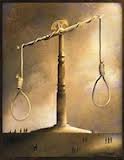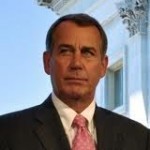
by | Jan 31, 2013
 State Senator Kent Sorenson (R-Milo) has been busy so far this session making an aggressive public push to have Iowa reinstate the death penalty. The main impetus for this was the horrifying double murder of two young cousins in Evansdale last year—an act that certainly justifies the punishment. Having said that, now is not the time to suck up energy and oxygen on something that even Sorenson himself agrees will not make it to the Governor’s desk.
State Senator Kent Sorenson (R-Milo) has been busy so far this session making an aggressive public push to have Iowa reinstate the death penalty. The main impetus for this was the horrifying double murder of two young cousins in Evansdale last year—an act that certainly justifies the punishment. Having said that, now is not the time to suck up energy and oxygen on something that even Sorenson himself agrees will not make it to the Governor’s desk.
The Death Penalty As An Issue
The issue itself has two main facets—the morality of capital punishment and the legal system which weighs the evidence and carries out the sentence. The morality concerns in my view are simply ridiculous, as the idea in principal that someone guilty of taking lives is entitled to live because we are “better than that†just doesn’t square. In essence what this argument says is that due to merely being born and drawing a breath we have a “right†to live regardless of our actions on this earth. Besides there being no rational basis for this “rightâ€, this principal forces one to say that men like Hitler or Pol Pot somehow should benefit from a social compact which, only because they were born, guarantees their continued existence. I can’t imagine anyone winning that argument—or frankly even making it.
The concerns regarding wrongly executing innocent human beings is a far more valid one. Most people who spend their lives in the criminal justice system as lawyers and judges surprisingly will tell you that the system has too many inherent flaws to guarantee all those convicted of murder are in fact guilty. Perhaps this shouldn’t be too surprising considering it is a human endeavor injected with strong emotions on all sides and occasional prejudices. Even with an exhaustive appeals process in place these concerns should not be ignored with the stakes so high.
Ironically, even in the states with the death penalty neither side is satisfied. Those who oppose it are incensed it exists, and those who support it rightly argue that sadistic killers routinely live on death row for 20 plus years. The trick for those who in principal support capital punishment is to delineate between cases of obvious guilt and the more “who-done-it†circumstantial cases.
A Possible Solution
If actual legislation were forwarded to return Iowa to a death penalty state, dealing with some of these legitimate concerns would be essential. My proposal for doing so would be to have the legal process play out much as it does now. Once a defendant is found guilty of murder, is sentenced to death, and loses a limited number of appeals (which are skipped to the front of all legal lines), the case would go before a panel of three judges. These judges would be appointed by either the Governor or the Legislature and would be tasked with reviewing the case. If all three judges agreed that the suspect is unquestionably guilty of the crime or crimes the death penalty would be carried out within a year of their ruling.
By putting in the extra safe-guard all reasonable concerns of a wrongfully accused person being put to death could be virtually eliminated. This would allow for proper justice to be administered in the very few cases where a murderer either confesses, is captured on video, or kills multiple people in a public shooting situation. There is no reason why separating out these rare situations can’t be accomplished, and if those advocating for the death penalty are serious they need to focus on ways of ensuring that those executed are done so justly. In the current climate it will not be enough to just activate it again as a legal punishment.
Wrong Time, Wrong Priority
Though brining the death penalty back to Iowa would be a welcome development to me personally, at this moment in time it is a wasted effort.
Besides the fact that it will never see a vote in both chambers, the last several sessions have failed to produce tax reform, education reform, mental health reform, and the gas tax issue is still bubbling below the surface. Until these issues are dealt with permanently the death penalty debate should remain on the back burner.

by | Jan 16, 2013
 Later this session the Iowa Legislature will debate various measures, namely the Governor’s, designed to improve the performance of our state’s K-12 schools. There are three main components to the Governor’s proposal and in a continuing series we will look at each separately. Today we start with the most expensive—the $160 million for increasing the base teacher salary from $28,000 to $35,000 over the next three years.
Later this session the Iowa Legislature will debate various measures, namely the Governor’s, designed to improve the performance of our state’s K-12 schools. There are three main components to the Governor’s proposal and in a continuing series we will look at each separately. Today we start with the most expensive—the $160 million for increasing the base teacher salary from $28,000 to $35,000 over the next three years.
First things first here, before they appropriate an additional dime of taxpayer money to this system it is both fair and prudent that at least three simple questions be asked and answered—Who are the great teachers in Iowa? Who are the average teachers? and Who are the bad teachers?
To clarify, by “who†I mean a literal list of names district by district categorizing each teacher as great, average, or poor in terms of classroom performance. Though this sounds simplistic I think most Iowans would be shocked to know how complicated a question this really is—and even further shocked to find out that nobody in the education bureaucracy can currently answer these questions definitively.
All we hear from both political parties is we have great teachers in Iowa, and to both reward this greatness and make sure we have great teachers in the future we have to pay them more. Even though it’s just as pertinent to fixing the problem, and because it’s not pleasant or politically correct, we never hear about bad teachers in our classrooms. You would think the first step in solving this problem, as it would be in the private sector, would be determine which employees are not performing their jobs at a high level.
While there is no doubt I am skeptical of most of these individual proposals I will reserve judgment and keep an open mind as legislation is crafted and various amendments are added. I don’t need to agree with all elements of the final product to support it, but do have to feel that it at least identifies the problem specifically. As with all issues there is both a policy and a political aspect that need examined.
The Policy
From a policy perspective, to just approve a blanket increase in pay when a majority of our schools are functioning very well is silly—and to spend this money with no clear goal or way of measuring success is flat-out nonsensical. Common sense says that in order for anyone, especially a Republican, to support a final bill it would have to contain clear benchmarks and ways of actually proving results were being delivered for the extra pay. As it stands now the approach seems to be let’s just pay teachers more money and in theory kids will learn more—which hasn’t proven to be the case in the past.
To make the point beyond question that we have already tried the increased funding approach, one needs only to consider the following three statistics: 1) since 2002 education appropriations to K-12 schools in Iowa has increased $650 million (+35.4%), 2) the average teacher salary in Iowa has increased from $36,480 in 2001 to $49,622 in 2010, and 3) 4% allowable growth was given every year from 2006 to 2010. In spite of all these amazing numbers, here we are again talking about more money.
What few seem willing to say is that when a school is failing there are only three actors involved to shoulder the blame—the teachers, the parents, or the students. Simply put, one of the three, or a combination of all three, are at fault when a school is failing. When looking at the teachers one obvious element is missing—a way to fairly evaluate how good each one is and how much money they deserve. Until this gets determined one senses that no amount of increased spending will do the trick. Here is what I propose.
While unsympathetic to their concerns regarding “teaching to a testâ€, I’m relatively sympathetic to teacher’s arguments that there are many factors out of their control determining a classes’ progress throughout a school year. Taking this into account my initial thought on a fair formula to evaluate our teachers (and hence dictate future pay) would look like this: 25%= credit for years on the job and the resulting experience (this would be automatic much like the step and lane increases in the current formula), 25%= based on student achievement using a baseline for the class coming in compared to their results going out, and 50%= determined by a yearly grading and evaluation by their direct superior (usually their principal).
The Politics
From a political standpoint the construct of the increased pay proposal seems to be offering Democrats (the teachers’ union) the following: we will increase teacher pay in exchange for allowing student achievement to be factored in to teacher evaluation. In my view Republicans shouldn’t be bargaining for a student achievement metric in evaluations—they should be demanding it. This should be a reality both because it makes perfect sense, and because past reforms and increases in pay have not solved the problem. Republicans should be able to win on the political argument that, in order to fix the problem, Iowans need to know which teachers are adequately doing their jobs.
If there is a political trade to be made in exchange for increasing teacher pay it should be for a significant look at the benefits of true school choice for parents. In my mind this would be a four year pilot program in which parents at all failing and sub-standard schools in Des Moines would have the freedom to spend the per-pupil cost attached to their child at any school they chose (with transportation being the responsibility of each participating parent). All students involved would have their progress tracked, with reports being given to the legislature after years 2 and 4. This would be similar in principal to the Zaun study bill from last session without all the “extreme†elements, like abolishing the Dept. of Education etc.
I would love to see baby-steps being taken in this direction, and would dare the teachers’ union to make the argument to Iowans that the well-being of the teachers and their union trumps that of a student in a failing school which they staff.
Conclusion
Given the history of failure in select districts and the many fruitless past funding increases, in general I believe the Republican hand on education reform is stronger than the Governor’s proposal recognizes. There is little reason the argument can’t be made that we have tried the teachers’ union way of never assigning blame and increasing spending—and it has not worked. If there is going to be reform, let us at least not try the same blanket increases in spending and hope for a different result. Instead we should identify the shortcomings in the flawed districts and fix them specifically.

by | Jan 8, 2013
 One of the top three priorities for the upcoming legislative session will be finally putting something on the books to bring Iowa’s commercial property tax rate in line with the rest of the nation. After much angling by both sides last year, ultimately no adjustments were made to the tax code.
One of the top three priorities for the upcoming legislative session will be finally putting something on the books to bring Iowa’s commercial property tax rate in line with the rest of the nation. After much angling by both sides last year, ultimately no adjustments were made to the tax code.
Below you will find a very brief recap and analysis of the three plans that were on the table last year.  They are important to know since past will certainly be prologue in this debate. Both sides are essentially pushing the same proposed solutions as they did a year ago—and one way or another the law will reflect whichever side wins on the issue.
Governor Branstad’s Plan (House Study Bill 519)
This plan would reduce the taxable value of Commercial and Industrial property by 5% a year for 8 consecutive years. The taxable value for these properties is currently at 100%, so in 8 years the plan would allow the State to collect on 60% of the valuation instead of the current 100%.
- The cap for increasing valuations on Residential and Ag properties would be lowered from the current 4% a year to 2% a year.
- The first 3 years of the 5% reduction in valuation would be guaranteed, with the additional 5 years of the 5% reduction being subject to the value of commercial property rising in its assessed value.
- To offset the lower revenue being brought in by local governments the State would pay cities money every year. $50 million in year one, $100 million in year two, $150 million in year three. After the third year the amount would be raised an additional $30 million per year until it got to a $240 million backfill. This backfill would then remain on the State’s books every year going forward.
- The proposed money to local governments would be administered in different amounts based on how much a local government was affected by the revenue loss.
Analysis—This, much like the Governor’s education reform, would essentially be an increase in power and control at the State government level. The positive is that, in theory, the local governments would be forced to cut spending as the backfilled money that they receive is projected to be less than the revenue loss experienced by the local governments. In the prior incarnation of this plan the “administered based on need†language was not included, so it is quite possible that the backfill sent to the local governments would in fact not require them to actually cut their budgets—it really would just depend on how different the property valuations were from city to city.
The House Republican Plan (House Study Bill 500)
In many ways this plan has a lot of the same principals as the Governor’s plan. One major differences is that it implements in 14 years instead of 8 (interestingly the House’s prior proposal called for the 8 years that the Governor has now adopted).
- The biggest difference is that instead of paying local governments to offset the revenue loss, this plan would eliminate the 12.5% “2nd effort levy†(and I believe the $5.40 per $1,000 taxable valuation known as the “uniform levyâ€) and instead, by the year 2019, would have the State fund 100% of the per-pupil cost of K-12 education. Note: Right now the uniform levy is taken from property owners statewide and the State pays to take that amount up to 87.5% of each years determined per-pupil cost—the remaining 12.5% is paid by local property taxes taken from inside each district.
Analysis—There are smaller components to this that I did not investigate fully, but in many ways this approach is the same as the Governor’s in that it limits the local governments taxing authority. While the Governor’s plan would take general fund money and give it to the locals, the House plan just takes the responsibility of paying for things that the locals would otherwise have to spend on with local property tax funds (mainly education). Also, like the Governor’s plan, it would not fully offset the drop in local government revenues and theoretically would force local entities to cut the size of their budgets.
Though “local control” is usually a Republican battle cry, in this case it is largely a Democrat argument against the Republican plans. I happen to find the criticism valid—but for different reasons. The Democrats oppose the taking of local control because it would limit the amount that taxes can be raised, I see it more as limiting the decision making of local communities to pursue what their residents think is best (within the broader State law). One of the unresolved issues I have here is how the State paying all of the education funds would play out in terms of funding each school district. I believe the current formula allows a discrepancy range of a $175 per-student from district to district but, given the fact that the State would fund 100% of the burden, the questions exist—would this remain and how so?.
The Senate Plan (SF 522)
This bill passed the Senate last year 46-4. The only 4 to vote against it were Republicans Chelgren, Dix, Whitver, and Sorenson.
- It would tax the first $30,000 of commercial property at the same rate of residential property. This would result in an estimated $555 to $714 reduction for typical Commercial taxpayers (this small amount is one of the reasons that the four Republicans listed above voted against it).
- The plan would top out at a reduction of $6,856 (paltry when you consider that large retailers routinely pay over $500,000 a year in property taxes).
- The biggest distinction from the other plans is that the savings contained in the bill would not be concrete, but instead would be tied to the total revenue amount brought in by the State. Tax relief would only fully materialize as long as the States revenue increased.
- The plan basically offers a $50 million reduction in Commercial property taxes per year, as long as the States revenue increased 4% in that year.
Analysis—In many ways this last bullet point means that it is not really a significant cut in taxes or spending at all, and frankly it’s shocking that only four Republicans voted against it. It has some other provisions that make it, more or less, a way to stop the impending increase in property taxes faced by everyone. The positive here is that it does not affect the local government’s revenue stream or sovereignty (nor does it backfill anything with other State funds). The flip-side is that it does not allow for any reduction in government spending. It basically says that as long as the economy is good and values of property increase we will agree to give you a tax credit to soften the burden of your taxes rising along with the value of your Commercial property.
Stating the obvious here—this proposal is totally insufficient to deal with the size of the problem. What makes this plan ridiculous is that one of the major advantages in a tax reform plan is that businesses will know that lower rates are solidly in place for future spending and hiring. By having a bulk of the tax savings tied to the amount the State brings in in a given year, you are in essence not able to tell a business owner what his rate will be going forward—and clearly uncertainty is a killer for business owners
Overview & Summary
All these plans seems somewhat flawed and I don’t endorse any of them on their merit. Since Democrat votes are needed to pass something, if I had to I would support the House plan. My strong belief is that all three are unnecessarily over-complicated. More than anything they are just moving money around and telling local governments that they can’t raise taxes beyond a certain point—how much you want to bet that this doesn’t stop the same legislature from mandating that the same municipalities do more things every year?
Ultimately my skepticism comes from the fact that these proposals are all about people paying less taxes without putting forth a dollar of specific spending cuts…funny how that works.
![Casinos, Bonds, and Cigarettes]()
by Steven Waechter | Jan 4, 2013
 Back in 2001, Iowa decided to securitize its portion of the multi-state tobacco lawsuit settlement. “Securitize†means to borrow against it. They issued almost $700 million in bonds through the Iowa Tobacco Settlement Authority, with the settlement money itself as the asset backing the bonds. Most of them are even tax-exempt.
Back in 2001, Iowa decided to securitize its portion of the multi-state tobacco lawsuit settlement. “Securitize†means to borrow against it. They issued almost $700 million in bonds through the Iowa Tobacco Settlement Authority, with the settlement money itself as the asset backing the bonds. Most of them are even tax-exempt.
Such is the nature of public finance; the settlement was a windfall of revenue that didn’t have to be taxed from the citizens, but instead of just riding the wave, the government used it as collateral to borrow money. Never put off spending that can be done today.
More than seventy percent of the money Iowa receives from the tobacco settlement goes to debt service on those bonds – these, like most government bonds, are coupon bonds, meaning that the accrued interest is paid periodically, usually every six months. The remainder goes to health-related things such as smoking cessation, but the bonds themselves financed “various capital projects.†I’m not sure what that entails, so far I haven’t found any list of specific projects.
If the tobacco industry finally succumbs to things like smoking cessation programs, those bonds will find themselves unsupported. Not to worry though – they are state-issued securities and failure to deliver will negatively impact Iowa’s credit. Because of this, the legislature would almost certainly pick up the tab with taxpayer money.
So, smoke up – there are bonds to cover.
In the meantime, you can click here to track the sale of Iowa’s Tobacco Settlement Authority Iowa Asset-Backed Series C bonds, my favorite resource for municipal bond information. Of course the fact that I have a favorite resource for such information suggests that I need a more fulfilling career, or perhaps a meaningful relationship.
Ash Trays and Slot Machines
Should you choose to smoke inside a casino, you will be supporting other types of bonds as well. The Iowa Events Center, for instance, was constructed with funds obtained from the sale of bonds that are supported with revenue from the casino at Prairie Meadows.
All of Iowa’s casinos – how many are there now? – contribute revenue in some manner to state and local government coffers through various direct and indirect means, everything from taxes, licensing, and even leases for facilities, not to mention sales and fuel taxes from the nearby communities, although casinos run by indigenous peoples can be an excellent source of untaxed cigarettes.
Economic Placebo
Casinos have become the first, last, favorite, and perhaps only tool in the box of economic development officials, and cities across the state still want more of them.
There was a time when every person with the sniffles was given antibiotics, despite the fact that while antibiotics fight bacteria, they are useless against viral illnesses. Today, casinos are the alleged cure-all of choice: Factory closes down, build a casino; young people move away, build a casino; county supervisor dozes off during a meeting, build a casino.
Some jobs will be created, some taxes will be collected, and some concerts and shows will be held to keep people busy, but the underlying problems will remain unresolved. No goods or services are created in a casino, and no assets are being bolstered. Money is simply changing hands.
It is also hard to imagine large numbers of people coming to Iowa for the casinos. I’m sure some people do, but I would think that most of the patrons are from the areas near the casino itself, and thus the money is really just churned around the community, with government taking a healthy chunk after each rinse cycle.
Gambling has traditionally been treated as a vice, and one that was more often illegal than it was celebrated. This vice has now been legitimized as a source of revenue – the beast must have flesh to survive – and it is hard to imagine a serious push to reverse course, although there might be some resistance if the Iowa Finance Authority tries to open a cathouse.
Image © gavran333 – Fotolia.com

by | Dec 17, 2012
 It’s been a brutal stretch for Republicans since November 6th and I hate to pile on, but one issue facing the Iowa Legislature this session reflects what a perilous situation we could be in as a political party. That issue is automated traffic enforcement—which, at least so far, applies to only red light and speed cameras.
It’s been a brutal stretch for Republicans since November 6th and I hate to pile on, but one issue facing the Iowa Legislature this session reflects what a perilous situation we could be in as a political party. That issue is automated traffic enforcement—which, at least so far, applies to only red light and speed cameras.
In spite of the disaster that was the 2012 election here in Iowa, perhaps the most depressing and telling sign of how far we have to go is that a clear majority of Legislators, and apparently Iowans, are not yet willing to say definitively that automated traffic enforcement is unacceptable. By default then we are saying we do not object to having cameras take pictures and videos of us in order to deliver substantial fines to our mailbox some 10 days later.
What I have heard from most legislators on this lately is that they believe from talking to their constituents this is close to a 50-50 issue. I don’t know if that’s accurate or not, but if it is then a majority of Conservatives and Libertarians are going to be in for an even worse ride than we previously thought.
I know there are several smart and well-reasoned Republicans making arguments for these cameras who see nothing wrong with them. I have to believe that a majority of these folks haven’t had the pleasure of receiving a $110.00 ticket in the mail from a non-memorable “infraction†that took place a week and a half before. And that these same people haven’t gone to the website link listed on the ticket to have the spooky experience of watching a video of them driving on a public road days before—yes this is how it works.
All the arguments against the cameras are well documented—no right to face your accuser, you may not have been driving, you could get numerous tickets before being aware you got any, questionable impacts on safety, the fact it is yet another increased revenue stream for government, etc.—but the biggest one to me is the overarching issue of what tactics we allow law enforcement and government to deploy against us. As we know too well, once we allow government to record us autonomously and levy fines against us for traffic violations, it is unlikely to stop there.
To all the proponents on this issue on both sides of the isle I ask the following—would you support having speedometers tied to computers in your vehicles which would use GPS coordinates to determine the speed limit and then issue you a ticket sent to your e-mail each time you went 8-10 mph over said limit? The analogy isn’t perfect…but it’s pretty close. Hard to imagine anyone saying yes—let alone a majority.
The Politics
The politics are interesting here too. In short, the Republican voting coalition needs, to a large degree, to include Libertarians or else they will win nothing moving forward. No matter how fiscally conservative they are, be assured that if the Republican Party here in Iowa and nationally will not stand up against video surveillance and mail delivered fines then Libertarians will never vote republican in a large majority. In fact, you would be hard-pressed to think of an issue that could more quickly lead to a third party—and hence the death of the Republican Party. Frankly, the truth is I wouldn’t blame them. If, as the party of small government and freedom, we won’t even stand up on this blatant of a “Big Brother†issue, then the jig is up.
The reason why the Libertarian coalition is so crucial is perhaps even more interesting. First and foremost you have the stubborn friction between the traditional voting blocs Republicans rely on to win elections and the current electorate. The largest single coalition in the Party is the religious-wing (in a society that is, for whatever reasons, growing more liberal on social issues), and the fastest growing new members of the electorate by a landslide are Hispanic voters (which we consistently lose by 30+ points). This is of course added to the fact that Republicans routinely lose the women vote by close to double digits (and they have voted in a greater number than men in every Presidential election since the 1980’s).
In pointing these things out I am in no way saying that these differences and pitfalls can’t be mitigated by the Republican Party, and am certainly not taking a position here on which coalitions should or shouldn’t prevail. The point I make is that because of these problematic dynamics for the Republican Party—a clear majority of the pragmatic Libertarian vote is absolutely essential going forward. In terms of the “going forwardâ€, Libertarians are by and large younger Americans that will be voting for generations (a segment of the youth vote Republicans could actually win), as well as the fact that Libertarian leanings, by nature, will grow larger the larger our government itself grows.
Tying It All Together
To be clear, this is not to say that Republicans would ever run on legalized prostitution or drugs, but it is to say that not standing up against something as symbolic of government overreach as traffic cameras would be a major mistake.
Both politically and on principle, fighting hard for a bill next session in the Iowa Legislature banning all automated traffic enforcement is a no-brainer. Not doing so would be abandoning the mantra of our Party—which is to stand for more freedom, less government intrusion, and less confiscatory power from the political class.
If as a Party we either fail to lead this charge in the first place, or do so and find a majority of Iowans don’t agree with us, there will be ramifications in future elections. As dim as the landscape looks now for Republicans it’s hard to imagine how much uglier it could get…but I know it would be much worse than $110 ticket in your mailbox.

by Art Smith | Dec 11, 2012
 Today’s special election for Senate District 22 are being tabulated. Â Charles Schneider is the winner, beating Desmund Adams in both Polk and Dallas Counties. Â Here are the vote counts:
Today’s special election for Senate District 22 are being tabulated. Â Charles Schneider is the winner, beating Desmund Adams in both Polk and Dallas Counties. Â Here are the vote counts:
| Candidate |
Polk County |
Dallas County |
Total Votes |
| Desmund Adams |
2,712 |
1,405 |
4,117 |
| Charles Schneider |
2,865 |
2,506 |
5,371 |
| Write-in |
5 |
0 |
5 |
| Totals |
 5,582 |
3,911 |
9,493 |
Congratulations to both candidates for their work and willingness to serve the public!

by | Dec 11, 2012
 (Check Back Tonight For Results and Recap)
(Check Back Tonight For Results and Recap)
The election to replace Pat Ward in the Iowa Senate takes place today in the West Des Moines / Waukee centered Senate District 22. Polls are open from 7 am to 9 pm, and the results will determine whether Democrats will have a 26-24 or a 27-23 majority for the next two years.
On paper Republicans like their chances for three reasons: 1) they have a very good candidate in Charles Schneider, 2) the most recent registration numbers in the district are (R-17,392) (D-12,929) (NP-15,996) (R+4,466), and 3) they have done very well in absentee ballot requests. While facing these 3 obstacles, Desmund Adams has to like the fact he has been campaigning for well over a year while Schneider has had only a month.
WHO TV Sit Down
On Sunday morning both candidates sat down with Channel 13’s Dave Price for a kind of dual interview/forum. Both men did well, and Schneider played it safe by not going on the offensive once. I am hoping this is due to him seeing an internal poll saying he’s in good shape—because I personally would have been more aggressive. They disagreed on all the standard issues: tax reform, gay marriage, the death penalty etc.
Of note here are 3 things from Adam’s performance. First, when addressing tax reform his position made no sense at all. I think he had to have accidently misspoken, but he said he favored lowering corporate tax rates in Iowa and using that “savings†to apply to the lowering of residential rates. He was not called on it by Price so I guess we will never know—but I’m not aware of how this approach is possible. Second, when asked as a self-proclaimed “moderate†Democrat if he broke from his Party on any issue he said “sure I doâ€. When asked for an example he said he really couldn’t give one because he has been so focused on door knocking—just ridiculous. Lastly, in a sly political move, he spoke at least four times about the over 7,000 doors he has knocked on in the district. The point of this was to emphasize that Schneider has only been in the race for a month, which is smart. However anyone giving this a second of thought realizes this doesn’t make him the right choice for the district. If I was running in Johnson County and knocked on every door in the district 5 times does that make me the guy for the job? Unless I had supernatural powers of persuasion of course the answer is no way.
Voter Resources
TCR preview of race between Adams and Pat Ward
Schneider Website – SchneiderForSenate.net
Adams Website – DesmundAdams.com
(Reminder: Check Back Tonight For Results and Recap)
![Casinos, Bonds, and Cigarettes]()
by | Dec 10, 2012
 I break from a majority of Republicans on the current fiscal cliff negotiations and believe the rate increases that Democrats are seeking should eventually be agreed to. More specifically I would support John Boehner signing on to taking the top bracket from 35% to 37-38% (short of the 39.6% Obama wants).
I break from a majority of Republicans on the current fiscal cliff negotiations and believe the rate increases that Democrats are seeking should eventually be agreed to. More specifically I would support John Boehner signing on to taking the top bracket from 35% to 37-38% (short of the 39.6% Obama wants).
Of course the argument against doing so is the superior one—essentially that the Senate and the President want more money to spend while having not passed a budget in 3 years and having not yet put any real spending cuts or entitlement reforms on the table. But the two Parties have been at a stalemate over this issue for years and in my view the trump card is that last month they held the Senate, picked up seats in the House, and won the Presidency. To me the bottom line is that if a political party never agreed to anything they didn’t think was 100% ideologically or philosophically accurate we would never reach any compromise. This in fact is the definition of compromise, and in light of the election results anyone who thinks Republicans weren’t pushed into a position of forced compromise is fooling themselves.
The reasons for swallowing this bitter pill are multiple. First off, though often times the winner of an election pushes for the passing of legislation saying they ran on it when they really didn’t—that is not the case here. There is no question that President Obama ran on raising taxes on rich people and Mitt Romney ran on lowering rates and capping deductions. Secondly, over 60% of the American people in poll after poll say they want the wealthier among us to pay more taxes. Unfortunately, the alternative of refusing to budge on this issue in favor of tax increases on 98% of Americans is simply not good policy. All sides agree it would be devastating, not to mention it plays into all the awful stereotypes of Republicans and is politically fatal.
Not helpful here is that this whole discussion echoes the earlier scene at a Republican Primary debate where all 10 candidates on stage said they would not take a deal of $10 in spending cuts for $1 of revenue increases—the majority of non-hardliners in this country just flat out won’t deem a political party serious about solving a problem with this kind of position.
Just to be clear, the above is not at all to say I agree with raising any rates, but the facts are the facts. The Democrats have a far stronger hand here—and it’s certainly strong enough to yield this specific tax increase they desperately want.
Looking on the bright side, after suffering the defeat we just had nationally if the only direct price Republicans have to pay is to raise taxes by 2-3% on one bracket in order to get the Bush tax cuts made permanent (until we have a majority to do real reform), then I think one could argue that is not an obscenely high cost. The big part of making this an acceptable outcome is of course what will be given by the other side to reward this concession?
As of now clearly Democrats have not offered anything and are not acting in good faith. Since they don’t have to give on entitlement reform in this situation, essentially Democrats are going to have to agree to hundreds of billions in non-discretionary, non-defense spending cuts. My position is if Boehner gets this in exchange for the small bump in rates, that is an acceptable outcome. If he isn’t able to achieve that—then caving on this position is a major defeat.
The Media Fails Us Again
So far in this “negotiation” Republicans and John Boehner in particular have been getting killed for letting the whole debate revolve around a portion of revenue increase that would fund the government for about 8 days. This is such a great and obvious point, and frankly the shallowness of our national debates in general makes it hard to have much hope for the future of the Republic.
I fully agree with the criticism for Republican leadership losing the messaging war on one hand, but on the other I wonder what more they can do about it. Time and time again they speak of Washington not having a revenue problem but a spending problem, and they certainly are publicly making the case this would fund the government for only 8 days. The reality is that of all the power and influence the liberal media has over this country, perhaps the most lethal and subtle is their ability to decide what the focus of the debate is. For obvious reasons the President wants it to center on a rich vs. poor construct, and low and behold that is exactly what we have.
My Advice To Boehner
If I were advising Republicans I would suggest putting this debate in context by making an obvious point that I have not heard made yet. The absolute proof that we have a spending problem and not a revenue problem is that just to balance the budget in one fiscal year we would have to raise tax revenues by 40%. Yes that’s right, 40% more dollars into the treasury just to get to the point that we are not running a deficit every year—that is without paying down a penny of the $16 trillion in National Debt.
This of course is because in past years we have borrowed 40 cents of every dollar we spent (so far this year it is up to 46 cents of every dollar). The notion that tax rates would have to be raised on the entire country to a level generating 40% more money each fiscal year is so insane that just maybe it could break through the media machine and into view of the population.
The End Game
What’s so frustrating for Republicans, including myself, is how much sense these arguments make and that we can’t even get the Party that controls the majority of our government to even discuss the bigger more frightening picture.
That being said, the reason we have elections is so that each Party can make their case and the people can make their choice. Even though it’s not sound policy, given the fact that this choice has just been made, conceding a few percentage point increase for one tax bracket is not the end of the world.
In spite of all the venom being directed toward the Republican leadership in the House we need to be rooting for them to succeed—which in this case means getting the least destructive outcome in a tough situation.
The post The Harsh Republican Reality of the Fiscal Cliff appeared first on The Conservative Reader.


by | Dec 4, 2012

When the inevitable battle with public-sector employees in Iowa begins to rage here in the next few months and every elected Democrat in the state marches in lock-step with union negotiators, the following will help you understand this phenomenon.
Not only does their ideology lend itself to supporting the concept of an organization/government “protecting” people from the free market–it turns out that this cast of Democrat legislators largely are the unions.
Iowa House Democratic Caucus by Occupation
Below is a look at the occupations of the 46 Democratic members of the Iowa House that will be in office the next two years.
Teachers/Principals former and current = 12
Attorneys = 7
Occupation Unclear = 4
Social Work = 2
1 Each of the Following— Realtor, Farmer, Pharmacist, Grants Coordinator, Funeral Home Business, Golf Course Owner, Banker, Accounting Clerk, Head of Non-Profit Organization, (12 more random single occupations not listed here).
Number who have direct/indirect past or current union backgrounds (mostly public-sector) = 21
Trends
By far the biggest takeaway here is that of the 42 who had a clear current or former occupation that could be found on their legislative page or campaign website, a whopping 21 of them had direct connections to unions–the vast majority of which were public-sector. That is a full 50% of the caucus and does not even include Bruce Hunter, a ranking member of the Labor Committee whose wife is the State Political Director of the AFL-CIO, or Anesa Kajtazovic who goes out of her way to mention in her bio that at a young age her father’s experiences in the workforce led her to be “reminded how important union representation can be.”
The second biggest trend is that 12 of the 42 members with clear employment histories are current or former teachers. This explains why year after year we have a fight in the legislature to increase spending on education by 4% for “allowable growth”–not to mention why firing a teacher is almost unheard of, why there is currently no substantive teacher evaluation, and why there needs to be a Republican push just to ensure that students aren’t passed out of the 3rd grade without being able to read at the proper level, a policy that would seem to be the epitome of common sense. What is not so easily explained is with such a large number of educators doubling as legislators and a majority of the state budget dedicated to it every year, how are the results embarrassingly insufficient in such a large number of districts.
Revealed above is the gross disproportion of representation that unions have in the General Assembly in comparison to the percentage of Iowa’s workforce that they account for. As of 2011 Iowa had nearly 1.4 million people in the workforce. Of this number only 155,000 were in unions (11.2%) and an additional 32,000 were effectively represented by union negotiations while not being listed members, thus bringing the total number of employees directly or indirectly represented by unions to 187,000, or 13.5% of the workforce. Of note here is that the 1.4 million Iowa workers number actually excludes those self-employed so the percentages represented by unions are actually slightly smaller than those listed above. Even taking the larger percentages, while only 13.5% of Iowans are either in or governed by unions, in the Iowa House’s Democratic caucus a full 50% have direct or past connections with unions.
Coming Up
Before the session gavels in I will also do a breakdown of the Republican Caucus by occupation in both Houses (unless one of the Liberal bloggers reading this wants to save me the leg work). It would be very interesting for comparison purposes and may further explain the massive partisan divide we see year after year–my guess is the top 3 for Republicans in some order are small business owners, lawyers, and farmers.
Later this week we will take a look at 3 specific cases that symbolize this dynamic of union/citizen representation in the House, and next week we will have a breakdown of the occupations of the Democrat Caucus in the Iowa Senate. This will be followed by a look at the proposals offered by both the unions and the governor and what is likely to unfold on this front next session.

by Art Smith | Nov 30, 2012
 Chris Hagenow is the winner in Iowa House District 43 after today’s recount. Â The official recount results are: Hagenow: 8,742; Judkins: 8,719; write-ins: 17. Â 17,478 votes were counted. Â The recount resulted in one additional vote for Hagenow from the unofficial count on election day.
Chris Hagenow is the winner in Iowa House District 43 after today’s recount. Â The official recount results are: Hagenow: 8,742; Judkins: 8,719; write-ins: 17. Â 17,478 votes were counted. Â The recount resulted in one additional vote for Hagenow from the unofficial count on election day.
The recount was requested by Democratic challenger Susan Judkins after the official results showed that she lost by a 22 votes against incumbant candidate Chris Hagenow. Â Both candidates are well known within the district and in the only public forum held with both candidates, there was limited differences in responses to questions from both. Â The district includes Clive, Windsor Heights and parts of West Des Moines. Â Representative Hagenow has represented the area (with some changes from recent redistricting) for the past 4 years.
Thanks to Jamie Fitzgerald for providing the numbers this morning!

 State Senator Kent Sorenson (R-Milo) has been busy so far this session making an aggressive public push to have Iowa reinstate the death penalty. The main impetus for this was the horrifying double murder of two young cousins in Evansdale last year—an act that certainly justifies the punishment. Having said that, now is not the time to suck up energy and oxygen on something that even Sorenson himself agrees will not make it to the Governor’s desk.
State Senator Kent Sorenson (R-Milo) has been busy so far this session making an aggressive public push to have Iowa reinstate the death penalty. The main impetus for this was the horrifying double murder of two young cousins in Evansdale last year—an act that certainly justifies the punishment. Having said that, now is not the time to suck up energy and oxygen on something that even Sorenson himself agrees will not make it to the Governor’s desk.














